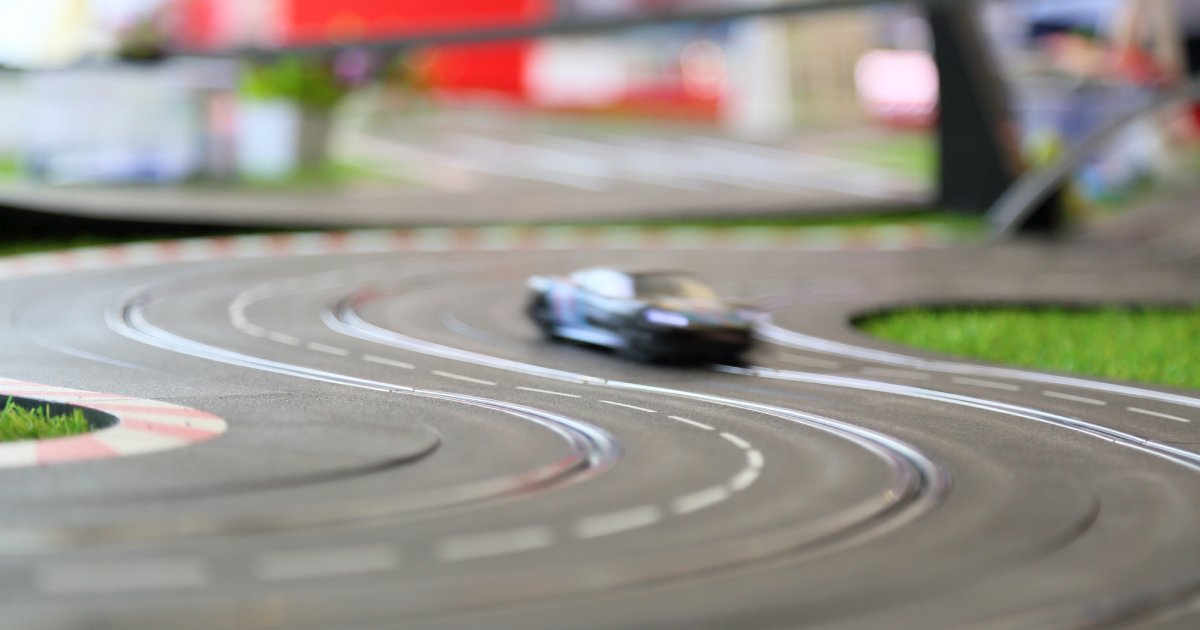Exploring the Interesting History of Slot Car Racing
Slot car racing is an electrifying blend of skill, strategy, and speed that has captivated enthusiasts for decades. Whether you’re an entertainment guru or a racing fan, slot car racing offers a unique world of miniature motorsports filled with nostalgia and innovation. But how did this tiny but mighty form of racing come to be? Buckle up, race fans, we’re exploring the interesting history of slot car racing and its incredible evolution.
Early Inspirations and Origins of Slot Car Racing
Slot car racing finds its roots in the early 20th century when model rail enthusiasts began experimenting with miniature vehicles on powered tracks. The inspiration stemmed from the success of electric trains in the 1910s and 20s. Tinkering hobbyists sought ways to transfer the same electric-powered concept to cars. By connecting small-scale vehicles to powered rails, hobbyists managed to develop an early version of racing on miniature tracks. However, these primitive models lacked the sophistication we see today.
This early tinkering set the stage for what would soon grow into an engaging and competitive pastime. Despite limited technology during this time, their fascination with speed and control laid the foundation for the industry to soar later. The hobby was gaining traction but still needed commercial innovation to gain mass appeal.
The First Commercial Slot Car Sets
The breakthrough moment for slot car racing came in the 1930s and 40s when electric toy cars were introduced commercially. Lionel, a company initially famous for model trains, dipped its toes into the market by producing one of the first sets of electric toy race cars. But it wasn’t until the late 50s that the concept truly took off.
Scalextric, a UK-based company, revolutionized the industry in 1957 by introducing the first modern slot car set. Unlike earlier vehicles, Scalextric’s designs used a groove or slot on the track to guide the cars, while an electrical connection powered their motors. This innovation gave hobbyists better control over speed and handling and made the experience far more dynamic. Soon, Scalextric sparked global interest, and what started as a niche concept was rapidly on its way to becoming mainstream entertainment.
Slot Car Racing’s Golden Age
The golden era of slot car racing dawned in the 1960s. Dedicated enthusiasts, young and old, flocked to hobby shops in search of the latest cars and upgrades. At its height, slot car racing even rivaled baseball and football as one of America’s most popular pastimes.
During this period, public slot car tracks became hotspots for competitions, bringing people together to put their skills to the test. Tracks could range from simple, oval layouts to intricate, winding designs that pushed racers to hone their precision and reflexes. The hobby was about mastering control, timing, and strategy to outmaneuver opponents—a combination that continues to excite fans to this day.
This was also an era that saw a surge in variety, as manufacturers began introducing cars modeled after real-life sports cars. From Ford Mustangs to Aston Martins, the miniature representations gave fans a chance to champion their favorite automobiles. The 1960s cemented slot car racing as a household name, and its influence as a cultural icon grew considerably.
The Role of Technology in Slot Car Racing
Technology has played a pivotal role in taking slot car racing from a simple hobby to a sophisticated sport. Early improvements included innovations like better track designs, realistic car bodies, and more effective motors. However, the big leap came in the 1980s when digital controls changed the game.
Digital slot car systems allowed for seamless lane changes and multiple cars racing on the same lane, which added layers of strategy and excitement. Brands like Carrera leaned heavily into enhanced controls and fine-tuned motors for smoother races and varied difficulty levels. These advancements made slot car racing significantly more competitive.
Additionally, the emergence of 3D modeling and printing has given enthusiasts the ability to customize everything down to the tiniest detail. Whether you’re designing a unique track or creating personalized cars, technological advancements have opened new possibilities for racers to showcase their creativity and individuality.
Slot Car Racing in Pop Culture
Slot car racing found its way into pop culture during its heyday. From appearing in TV shows to being featured in blockbuster movies, this unique pastime became symbolic of fun and nostalgia. You might recognize its appearances in movies like “Toy Story” or even its brief feature in episodes of “Mad Men,” illustrating how memorable it’s been for generations.
Beyond traditional media, slot car racing remains an ongoing favorite at expos, conventions, and even gaming tournaments. Hobbyists and collectors alike gather to showcase their prized possessions and celebrate the camaraderie and joy this hobby has always inspired.
The Resurgence of Slot Car Racing
While its popularity dipped slightly in the late 20th century, slot car racing is experiencing a resurgence today. Thanks to online communities, vintage car collectors, and renewed interest in hands-on, screen-free entertainment, this pastime is attracting a fresh generation of racers.
Contemporary brands are redesigning tracks and cars to cater to modern tastes while retaining a touch of nostalgia. Adding to its appeal is the fact that slot car racing is an activity perfect for kids and adults, which bridges generational gaps and emphasizes family fun.
How To Thrive in Slot Car Racing Competitions
For people looking to get into competitive slot car racing, success hinges on mastering a few basic principles. First, understanding the layout of the track and preparing your strategy are critical. Some tracks may demand precise control around turns, while others reward pure, unadulterated speed. Regular practice matters, so spend ample time honing your reflexes to give you a competitive edge.
Equally important is fine-tuning your vehicle. Investing in high-quality tires, maintaining the car’s motor, and understanding aerodynamics will make a massive difference in how effectively your car handles the track. Competitions reward speed, consistency, and finesse.
Looking Ahead: The Future of Slot Car Racing
Slot car racing has always been about balancing tradition with innovation. Looking forward, we’re likely to see even more advancements, from app-enabled tracks to improved customization through cutting-edge tech. Augmented reality could potentially transform how enthusiasts experience races, adding interactive overlays that enhance strategy and spectating. After exploring the interesting history of slot car racing, are you ready to buckle in and take part?
Share this content:














Post Comment